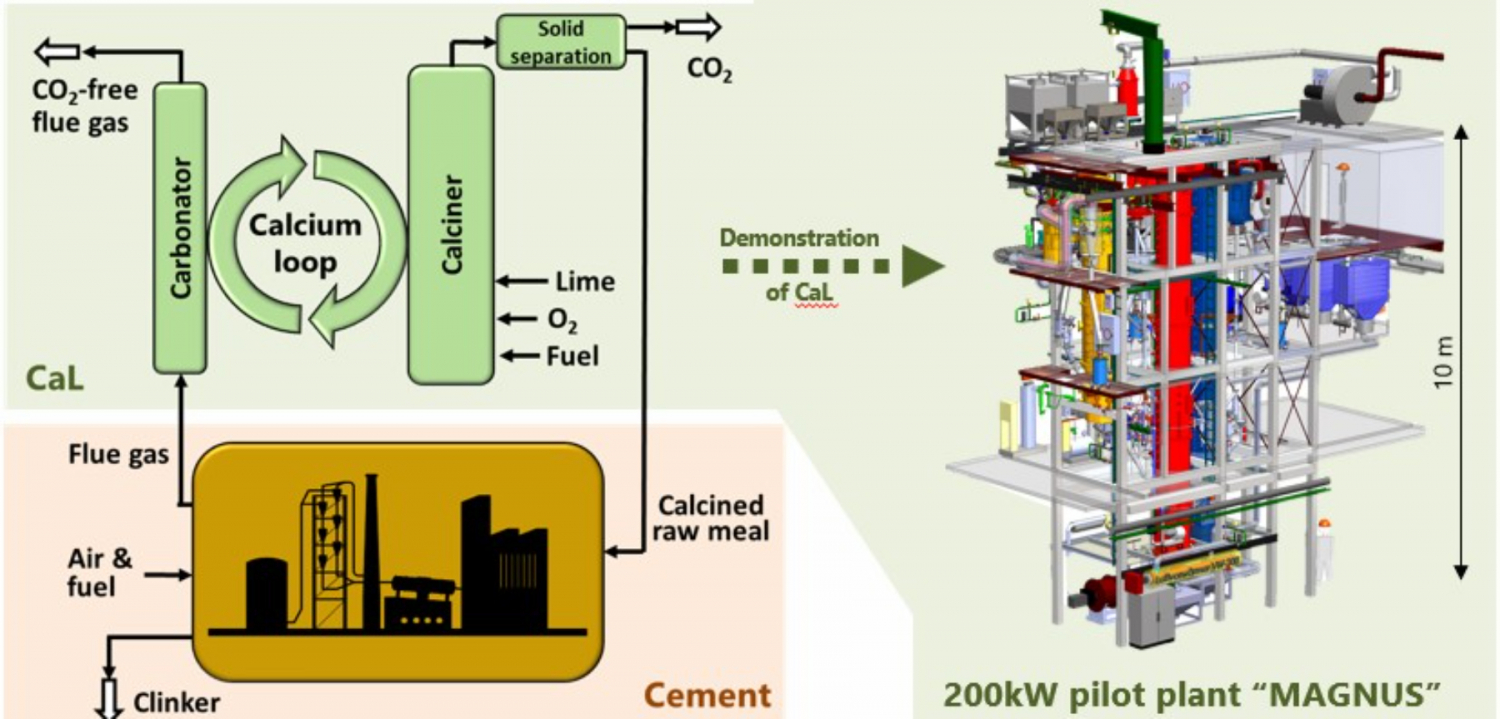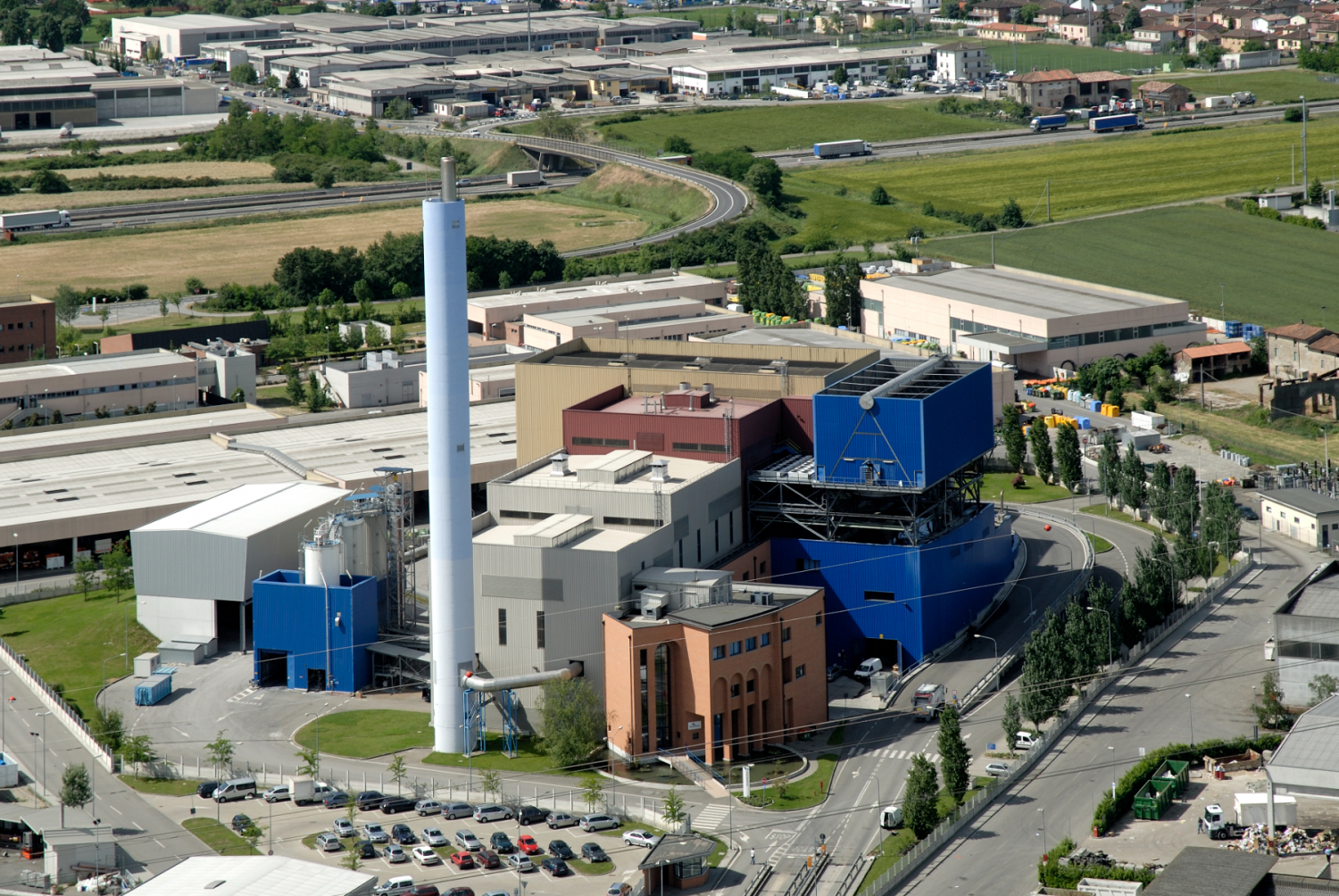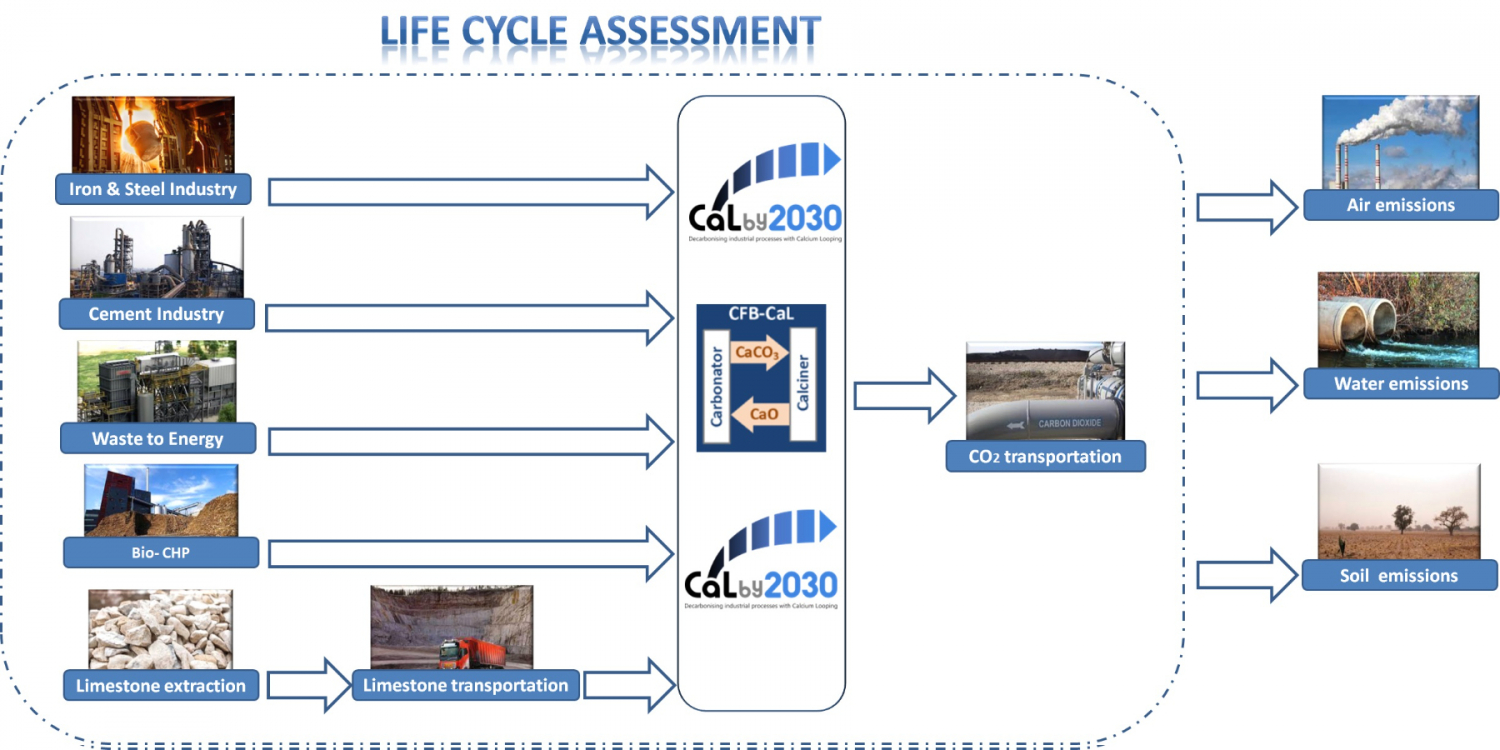Structure
NEWSLETTER
CaLby2030 is organized in 8 Work Packages (WP). WP1-6 cover the technical and scientific tasks related to CFB-CaL technology development, the assessment of environmental impacts, societal readiness and public policy activities. WP7-8 deal with project dissemination, communication, exploitation and management activities.
In order to reach the main outcomes in WP5, progress in WP1-4 and WP6 is needed. The successful retrofit and commissioning of CaL pilots in WP1&3 will be able to generate the first sets of experimental results at TRL6 relevant for cement, iron&steel, Bio-CHP and WtE applications. WP4 will operate initially using existing modelling tools and benchmark studies adapted to the new processes, and will evolve as more information becomes available from piloting experiments to tune models, towards the development of advanced 3D reactor and process models for the different applications. These modelling tools will be the basis for TRL9 demo designs (WP5), using the expertise and know-how from end-users on their plant operations and cluster environments, regarding viable integration possibilities of the plants and viable options for the CO2 management.
.jpg)
WP1: CFB-CaL pilot testing for cement plants
WP1 is focused on exploiting dependable and rapidly scalable CFB reactors for the CaL system integrated into cement plants, allowing a direct feed of hot calcined raw meal (CaL purge) from the CaL system to the cement process, see figure XX. Thereby, energy penalties for integration of material streams can on one hand be reduced in comparison to tail-end concepts for CaL in cement plants. The calcination load in the cement plant on the other hand is minimized, reducing the consumption of heat provided by air combustion of organic fuels in the clinker kiln which consequently decreases the amount of CO2 to be captured (i.e. load on CaL carbonator). To ensure good clinker quality from CaL purge, the integrated CaL will be operated with sorbents of average particle sizes in the for CFBs uncommon range of 100 microns. Therefore, the following main activities are carried out demonstrating integrated CFB-CaL for cement plants:
- Through more than 1,200 hours of operation at the retrofitted TRL6 pilot plant MAGNUS, depict the novel CFB-CaL concept.
- Demonstrate practical expertise and foundational principles for the development of an industrial-scale facility.
- Establish the smallest possible particle size for the limestone input.
- Using CFB-CaL, validate CO2 capture rates exceed 99 percent at TRL6.
- Evaluate the CaL purge in light of its potential application as clinker feed.

WP2: CFB-CaL pilot testing for Iron&Steel
WP2 aims at integrating CFB-CaL systems to capture CO2 from steel-mill off-gases emitted by future iron & steel plants that rely on clean electricity but still produce substantial unavoidable process emissions, by the following key activities:
- Construct and design a CaL-CFB pilot system suitable for utilisation with gas streams generated during ongoing and forthcoming metallurgical operations.
- Through the implementation of two measurement initiatives at an industrially operated AOD and EAF, generate a data set pertaining to variable gas conditions.
- Operate two campaigns round-the-clock for a total of 1200 hours in order to generate design data for system evaluation and model development.
- Introduce additional AOD particles into a single campaign.
- Throughout the trials, replicate the variable character of AOD/EAF off-gas.
WP3: CFB-CaL pilot testing for Bio & WtE power
This WP addresses the application of sustainable fuels in two power systems: one designed for post-combustion CO₂ capture (e.g., a power plant utilising residual biomass or a waste-to-energy plant), and the other a CFB-CaL capture system that utilises sustainable fuels burned in an oxy-fired CFB calciner, whilst pursuing the following:
- Conduct a 1.7 MWth CFB-CaL pilot to demonstrate a CFB-CaL system for WtE and Bio-CHP power facilities.
- Exhibit CO₂ capture rates exceeding 99% through the utilisation of Ca(OH)₂ as a supplementary sorbent, encompassing the co-capture of acid gases.
- Utilise residual biomass and solid recovered fuels to illustrate the oxy-fired calcination of CaCO₃ with solids conversion efficiencies exceeding 99 percent.
- Compile dynamic operation data for WP2 and a database of experimental information valuable for scaling up and modelling in WP4.
- Confirm the circularity of CaO-rich purges utilised in the industrial processing of hydrated lime and cement
WP4: CFB-CaL modelling, process simulation and cluster integration
The following objectives guide the development of process models for supporting full-scale process evaluation and the necessary techno-economic analyses/cluster integrations, which are the focus of each task in WP4:
- Create modelling tools for all CFB-CaL applications implemented in demonstration units.
- Formulate process models to optimise the techno-economic aspects of the CaL technologies across the four process applications.
- Apply to every modelling tool and application the insights and conclusions gained from pilot experiments.
- Construct a model for multi-modal transport of captured CO2 from CFB-CaL systems that incorporates cost, environmental impact, and safety as multi-criteria optimisation criteria.
Ongoing updates will be provided to the consortium in the form of simulation outcomes, process-flow diagrams, and comprehensive analyses, which will serve as input for all other work packages. The advancement and expansion of CaL technology in the domain of low-carbon steel, cement, and power facilities that utilise residual biomass and waste will be aided by validated models and process data analyses.
WP5: Design of demonstration projects including CO2 management at cluster level
The objective of WP5's activities is to assess, evaluate, and deliver the necessary engineering, commercial, and regulatory frameworks for TRL9 demonstration projects at four potential host sites that represent the industrial sectors under investigation in CaLby2030. Utilizing the project's piloting and modelling activities to expedite the technical deployment of the developed process concepts and technologies is the primary objective of this WP.
This will be accomplished through the pursuit of the subsequent specific objectives:
- Conceptual design for FOAK retrofitted CaL CCUS system in cement industry (host site: THOMAS’ integrated cement plant in Karsdorf, GE)
- Conceptual design for FOAK retrofitted CaL CCUS system in Steel industry (host site: ALLEIMA’s AOD and EAF steel plant in Sandviken, SE)
- Conceptual design for FOAK retrofitted CaL CCUS system in Bio-CHP industry (host site: HUNOSA’s 50 MWe La Pereda biomass-fired power plant, ES)
- Conceptual design for FOAK retrofitted CaL CCUS system in WtE plants (host site: IREN’s Waste-to-Energy plant in Piacenza, IT)
- Establish the optimal mode of CO2 transport for specific CFB-CaL demonstration programs.

WP6: Environmental impacts and social perception of a CCUS demonstration project
WP6 will concentrate on two main sustainability pillars required for the implementation of CCUS: the environmental and the social aspects. WP6 will focus on the environmental quantification of CCUS, as well as on the assessment of the social acceptability and societal readiness for the commercial deployment of CFB-CaL as a CCUS technology. Additionally, this WP will carry out LCA evaluations of selected CCUS demonstration projects involving CFB-CaL technology applied to various energy intensive industries such as: iron and steel, cement manufacture, waste to energy or bio combined heat and power. Specifically, the WP6 subtasks will:
- Conduct an environmental assessment of the CaL system using the LCA methodology.
- Design and analyse a questionnaire to assess the social preferences and acceptability of a case study involving a commercial industrial facility that employs CFB-CaL capture technology (La Pereda plant, Asturias, Spain).
- Determine the political and social factors that facilitate or impede the implementation of CaL capture technology.
The main purpose is to demonstrate the difficulties that arise when CCUS technologies attempt to strike a balance between the worldwide advantages of zero or negative emissions and the social repercussions and acceptability of the industrial implementation of the technology.

WP7: Dissemination, communication and exploitation of results
The primary aim of WP7 is to effectively communicate project objectives and results to all target audiences and to disseminate the project's findings. Additionally, the WP will develop comprehensive plans and strategies to safeguard and exploit project outcomes in the future through the implementation of the following significant activities:
- Construct and manage the project website, which includes both a public and private section and is equipped with specialised features to facilitate communication between the consortium and its stakeholders;
- throughout the duration of the project, coordinate with the press offices of partners and conduct communication via the website, social media platforms, and partners' websites;
- targeted dissemination activities include disseminating scientific articles through peer-reviewed international journals, participating in consortium-organized dissemination events, distributing promotional materials, and preparing policy memoranda for distribution to key policy makers;
- safeguard every outcome and result;
- optimise the utilisation of outcomes by seizing every nascent opportunity to integrate the outcome into the mainstream and guarantee its marketability, thus formulating a business strategy for each potentially commercially viable technology that emerges as a consequence of the undertaking.
WP8: Management (scientific, technical, economic, legal) and coordination
The primary objectives of WP8 are to guarantee efficient project management and quality control through the implementation of the subsequent activities:
- Monitor project implementation by establishing an effective management and decision-making framework to oversee the overall execution of the project;
- Ensure the scientific quality of project outputs is consistently assessed through dedicated management structures;
- Execute sufficient risk management protocols to facilitate the prompt detection of issues and the subsequent execution of contingency plans;
- Ensure that all reporting activities (including those pertaining to financial aspects) are executed accurately, efficiently, and transparently, in compliance with European Commission regulations;
- Devise a Data Management Plan that delineates the procedures for data collection, processing, and generation, as well as their subsequent sharing, accessibility, curation, and preservation;
- Establish a routine schedule for partner meetings to facilitate effective collaboration and coordination pertaining to managerial and technical matters;
- Guarantee efficient communication both internally (within the consortium) and externally (specifically with the European Commission and any pertinent third party);
- Guarantee effective administration of ethical concerns.